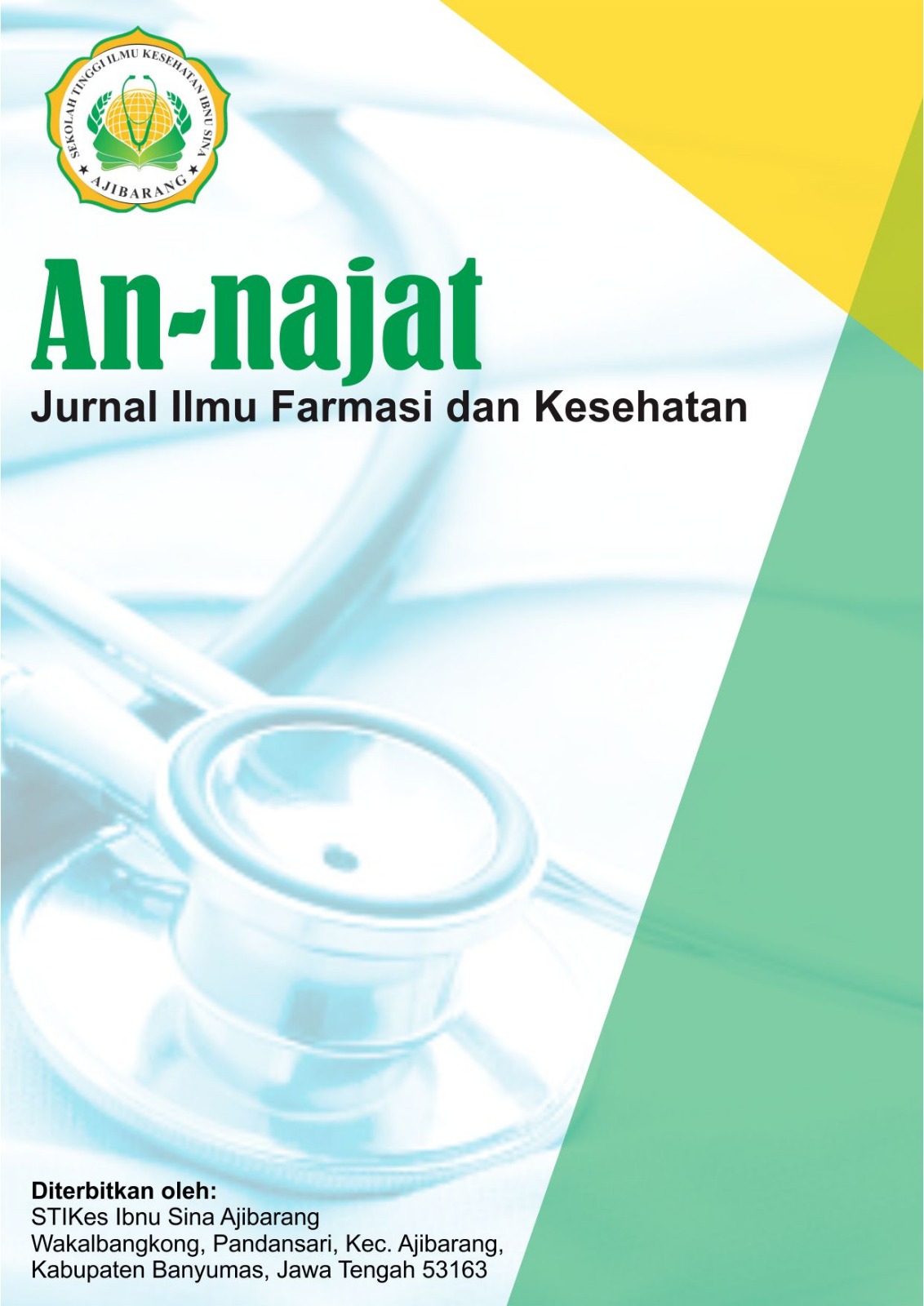Penerapan Range of Motion Pasif terhadap Gangguan Mobilitas Fisik pada Pasien Miastenia Gravis di RSUD Dr. Moewardi
DOI:
https://doi.org/10.59841/an-najat.v3i3.3130Keywords:
Physical Mobility, Impairement, Miastenia Gravis, Range of MotionAbstract
Myasthenia Gravis (MG) is a rare chronic disease caused by a neuromuscular disorder resulting from an autoimmune condition. The primary cause of MG is a thymus gland abnormality that produces an excessive amount of abnormal antibodies. These autoantibodies block signal transmission at the postsynaptic membrane of the neuromuscular junction. As a result, the signal transmission required for muscle contraction through acetylcholine receptor binding on muscle fibers becomes impaired. In Indonesia, MG prevalence remains low. The typical clinical manifestations include muscle weakness, such as ptosis, diplopia, limb weakness, dysphagia, speech difficulties, and respiratory failure. One progressive muscle weakness. Non-pharmacological management, which includes passive Range of Motion (ROM) exercises, involves joint movements that promote muscle contraction and enhance mobility. ROM serves as a rehabilitation intervention that improves muscle strength, increases joint flexibility, and prevents joint stiffness. During a six-day consecutive intervention, passive ROM exercises improved both muscle strength and limb range of motion. Prior to ROM administration, muscle strength and range of motion scores were recorded at and , respectively. After the intervention, muscle strength and range of motion scores increased to and These results indicate that passive ROM therapy can serve as a rehabilitation strategy to reduce physical limitations and improve the quality of life in patients with myasthenia gravis.
References
Cornelis, E., & Sengkey, L. S. (2021). Rehabilitasi medik pada miastenia gravis. Jurnal Medik dan Rehabilitasi, 3(3).
Djamaludin, D., Kusumaningsih, D., & Prasetyo, H. (2022). Efektivitas ROM pasif terhadap tonus otot pasien post-operasi fraktur ekstremitas di Kecamatan Bekri Lampung Tengah. Jurnal Kreativitas Pengabdian kepada Masyarakat, 5(10), 3627–3639. https://doi.org/10.33024/jkpm.v5i10.7329
Dresser, L., Wlodarski, R., Rezania, K., & Soliven, B. (2021). Myasthenia gravis: Epidemiology, pathophysiology and clinical manifestations. Clinical Medicine, 10(11). https://doi.org/10.3390/jcm10112235
Kus, G., Alpozgen, A. Z., Ozdincler, A. R., Gungor, F., & Altun, S. (2025). The effectiveness of proprioceptive neuromuscular facilitation techniques versus conventional therapy in patients with proximal humerus fracture: Randomized controlled trial. An International Journal of Physical Therapy. https://doi.org/10.1080/09593985.2025.2486418
Mccoyle, M. D., Patel, S., & Du, X. (2023). New and emerging treatments for myasthenia gravis. BMJ Medicine, 7(1). https://doi.org/10.1136/bmjmed-2022-000241
Nugroho, F. A. (2024). Intervensi keperawatan kombinasi ROM aktif dan squishy pada pasien post stroke dengan hambatan mobilitas fisik. Penelitian Inovatif (JUPIN), 4(1), 21–28. https://doi.org/10.54082/jupin.260
Punga, A. R., Maddison, P., Heckmann, J. M., Guptill, J. T., & Evoli, A. (2022). Epidemiology, diagnostics, and biomarkers of autoimmune neuromuscular junction disorders. The Lancet Neurology, 21(2), 176–188.
Salsabila, K., Mutiara, H., & Hanriko, R. (2023). Miastenia gravis: Etiologi, patofisiologi, manifestasi klinis, penegakkan diagnosis dan tatalaksana. Medula, 13(1).
Sholihany, R. F., Waluyo, A., & Irawati, D. (2021). Latihan ROM pasif unilateral dan bilateral terhadap peningkatan kekuatan otot akibat stroke iskemik. Jurnal Keperawatan Silampari, 4(2). https://doi.org/10.31539/jks.v4i2.1920
Siswanto, A. A. B., Sobaryati, Kestriani, N. D., Zulfariansyah, A., Pradian, E., Suwarman, & Maskoen, T. T. (2020). Tatalaksana intensive care unit pasien krisis miastenia yang dipicu oleh pneumonia komunitas. Anesthesia and Critical Care, 38(1).
Soeroso, D. A., & Kurniawan, S. N. (2023). Patofisiologi miastenia gravis. Journal of Pain, Headache and Vertigo, 4. https://doi.org/10.21776/ub.jphv.2023.004.02.5
Tim Pokja SDKI DPP PPNI. (2017). Standar diagnosis keperawatan Indonesia: Definisi dan indikator diagnostik (1st ed., Vol. III). DPP PPNI.
Wulandari, S., & Oktarina, D. (2024). Autoantibodi dan deteksinya pada miastenia gravis: Tinjauan pustaka. Journal of Medical Laboratory and Science, 4(1). https://doi.org/10.36086/medlabscience.v4i1
Zakeri, M. A., Aziz, A. R., Rahiminezhad, E., & Dehghan, M. (2024). Effectiveness of massage and range of motion exercises on muscle strength and intensive care unit-acquired weakness in Iranian patients with COVID-19: A randomized parallel-controlled trial. Acute and Critical Care, 39(1). https://doi.org/10.4266/acc.2023.00416
Downloads
Published
How to Cite
Issue
Section
License
Copyright (c) 2025 An-Najat

This work is licensed under a Creative Commons Attribution-ShareAlike 4.0 International License.










